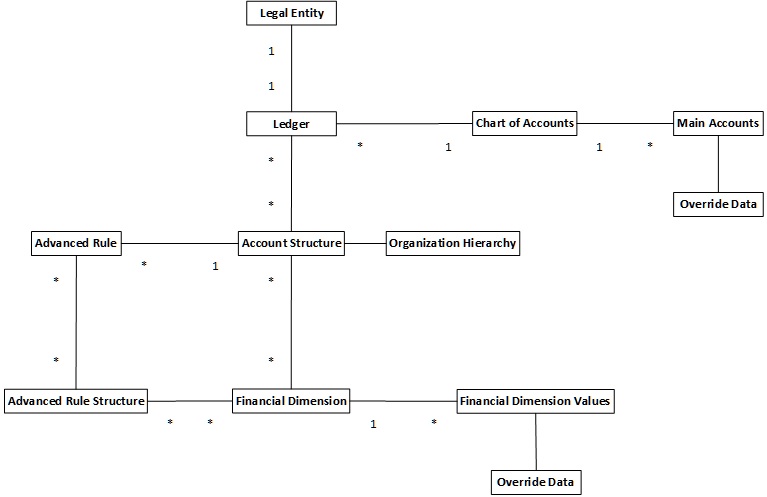Planning your chart of accounts in AX 2012 (Part 1 of 7)
One of the most important things to think about when implementing a new ERP system is the design of the chart of accounts. The
definition of a chart of accounts can be different across applications and can mean different things to different users. An account number may or may not
include the concept of a legal entity segment, depending on whether the system supports a global/shared chart of accounts or whether a separate chart of
accounts must be created for each legal entity.
There are linear charts of accounts and there are relational charts of accounts. A linear chart of accounts requires the setup of every
supported combination of segment values prior to using them in order for an account number to be valid. These account numbers may be created manually or
through an automated function based on some defined rules. A relational chart of accounts is made up of different components, or building blocks, that allow
an account number to be ‘created’ at time of entry. Microsoft Dynamics AX 2012 has a relational chart of accounts.
A new financial dimension framework was introduced into Microsoft Dynamics AX 2012 to provide the building blocks for the chart of
accounts. This blog series is focused on describing these different building blocks and to provide some things to think about when designing the chart of
accounts. This first entry will provide the high level overview and then I’ll break it down over future posts.
The conceptual drawing of the different components that define chart of accounts in Microsoft Dynamics AX 2012 looks like this:
Future posts will go into more detail, but at a high level, the conceptual drawing is stating the following for Dynamics AX 2012:
- Every legal entity (aka AX company) will have one ledger which will determine which chart of accounts and account structures
will be used by the legal entity. The ledger will also determine the fiscal calendar and currency setup information for the legal entity. - A ledger has only one chart of accounts but a specific chart of accounts can be used by multiple ledgers (legal entities).
- A chart of accounts is a list of main accounts. Some setup for a main account may be overridden for a specific company.
- Account structures determine what segments are available for an account number as well as the rules for determining the valid
combinations of main accounts and financial dimension values. A specific ledger can be associated with one or more account structures as of AX 2012 R2. AX 2012
RTM associated the account structures to the chart of accounts. - If two or more segments of an account structure are organization units, such as Business Unit or Department, an organization
hierarchy can be used to determine the valid combinations and the constraints would not need to be defined directly in the account structure. - Additional rules, or advanced rules, can be defined for a specific account structure. You can think of an advanced rule as
adding additional financial dimensions to an account structure.
The next post for this blog series will focus on the Chart of accounts and its related setup.
Regards,
Kim
